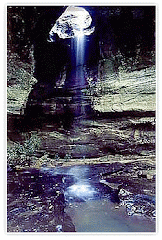 The Naga fireballs (Thai: บั้งไฟพญานาค, bangfai payanak) are a phenomenon seen in the Mekong river - in Thailand (Nong Khai province and Isan) and in Laos - in which glowing balls rise from depths. The balls are reddish in colour and about the size of an egg; they rise a couple of hundred metres before disappearing. The number of fireballs is variable, being reported at between tens and thousands per night.
The Naga fireballs (Thai: บั้งไฟพญานาค, bangfai payanak) are a phenomenon seen in the Mekong river - in Thailand (Nong Khai province and Isan) and in Laos - in which glowing balls rise from depths. The balls are reddish in colour and about the size of an egg; they rise a couple of hundred metres before disappearing. The number of fireballs is variable, being reported at between tens and thousands per night.The fireballs have been seen for centuries and are most often reported around the night of Wan Awk Pansa - the end of the Buddhist rains retreat - in October, although displays have also been reported in March, April, May, June and September.
The cause of the phenomenon is unclear: it has been proposed that the balls are produced by the fermentation of sediment in the river, which can combust in the particular river and atmospheric conditions of the nights in question.
A programme on Thai television in 2002 suggested that they were produced by tracer fire from soldiers on the Lao side of the river. This provoked furious protests from local villagers, who believe that the balls are produced by a mythical serpent, the Naga or Phaya Naga, living in the river. Popular Thai language newspapers also supported the Naga theory.











